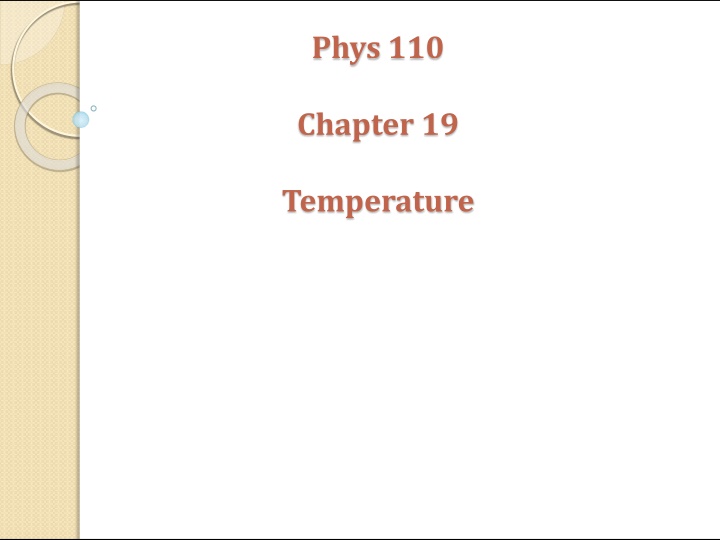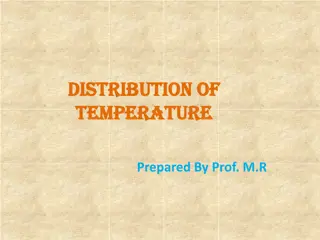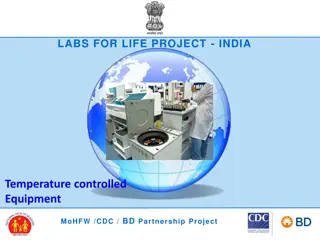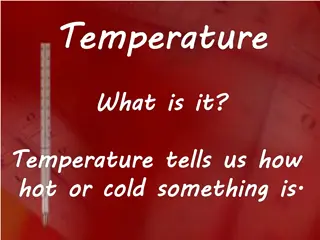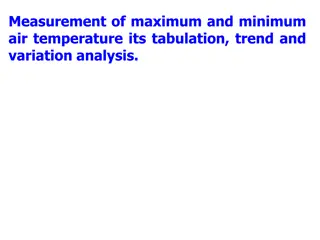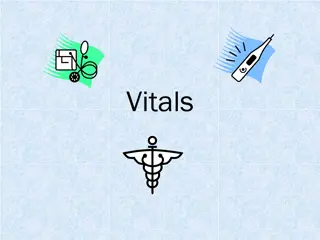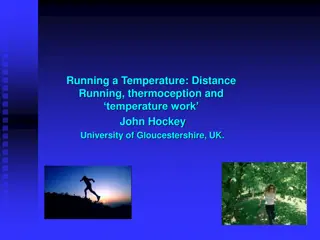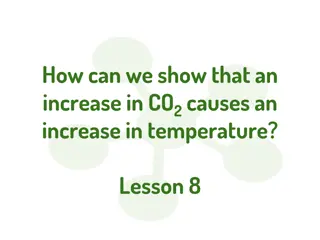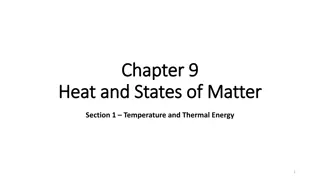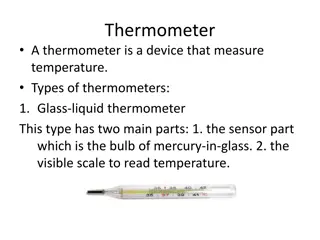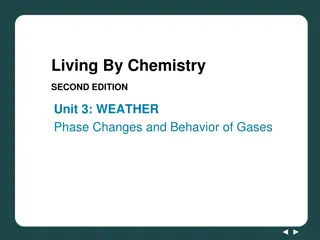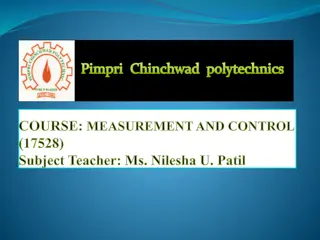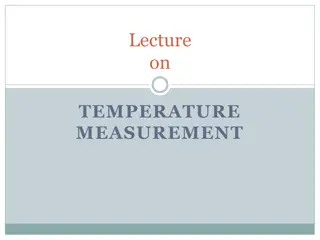Temperature and Thermometers Overview
This overview covers topics like the Zeroth Law of Thermodynamics, thermometers and the Celsius scale, constant-volume gas thermometer, and temperature scales including Celsius, Fahrenheit, and Kelvin. Understanding thermal equilibrium, absolute temperature, and properties used in temperature measurement.
Download Presentation

Please find below an Image/Link to download the presentation.
The content on the website is provided AS IS for your information and personal use only. It may not be sold, licensed, or shared on other websites without obtaining consent from the author.If you encounter any issues during the download, it is possible that the publisher has removed the file from their server.
You are allowed to download the files provided on this website for personal or commercial use, subject to the condition that they are used lawfully. All files are the property of their respective owners.
The content on the website is provided AS IS for your information and personal use only. It may not be sold, licensed, or shared on other websites without obtaining consent from the author.
E N D
Presentation Transcript
Phys 110 Chapter 19 Temperature
LECTURE OUTLINE 19.1 Temperature and the Zeroth Law of Thermodynamics 19.2 Thermometers and the Celsius Temperature Scale 19.3 The Constant-Volume Gas Thermometer and the Absolute Temperature Scale 2
19.1 Temperature and the Zeroth Law of Thermodynamics Two objects are in thermal equilibrium with each other if they do not exchange energy when in thermal contact. The zeroth law of thermodynamics (the law of equilibrium): states that if objects A and B are separately in thermal equilibrium with a third object C, then objects A and B are in thermal equilibrium with each other. Two objects in thermal equilibrium with each other are at the same temperature. Conversely, if two objects have different temperatures, then they are not in thermal equilibrium with each other.
19.2 Thermometers and the Celsius Temperature Scale Thermometers are devices that are used to measure the temperature of a system. All thermometers are based on the principle that some physical property of a system changes as the system s temperature changes. . Some physical properties that change with temperature are: (1) the volume of a liquid (2) the dimensions of a solid (3) the pressure of a gas at constant volume (4) the volume of a gas at constant pressure (5) the electric resistance of a conductor (6) the color of an object. A temperature scale can be established on the basis of any one of these physical properties.
Temperature is the property that determines whether an object is in thermal equilibrium with other objects. Two objects in thermal equilibrium with each other are at the same temperature. 0 C is called the ice point of water. 100 C is the steam point of water. The length of the liquid column of thermometer between the two points is divided into 100 equal segments to create the Celsius scale. Thus, each segment denotes a change in temperature of one Celsius degree.
19.3 The Constant-Volume Gas Thermometer and the Absolute Temperature Scale An ideal gas is described by the equation of state: PV=nRT where n equals the number of moles of the gas, V is its volume, R is the universal gas constant (8.314 J/mol.K), and T is the absolute temperature.
The Celsius, Fahrenheit, and Kelvin Temperature Scales The conversion between Celsius and Kelvin temperatures is: The relationship between the Celsius and Fahrenheit temperature scales is: We can use the two Equations above to find a relationship between changes in temperature on the Celsius, Kelvin, and Fahrenheit scales:
Problem 2. In a constant-volume gas thermometer, the pressure at 20.0 C is 0.980 atm. (a) What is the pressure at 45.0 C? (b) What is the temperature if the pressure is 0.500 atm?
H.W. Problems 5. The temperature difference between the inside and the outside of an automobile engine is 450 C. Express this temperature difference on (a) the Fahrenheit scale and (b) the Kelvin scale.
H.W. Problems 7. The melting point of gold is 1064 C, and the boiling point is 2660 C. (a) Express these temperatures in kelvins. (b) Compute the difference between these temperatures in Celsius degrees and kelvins.
